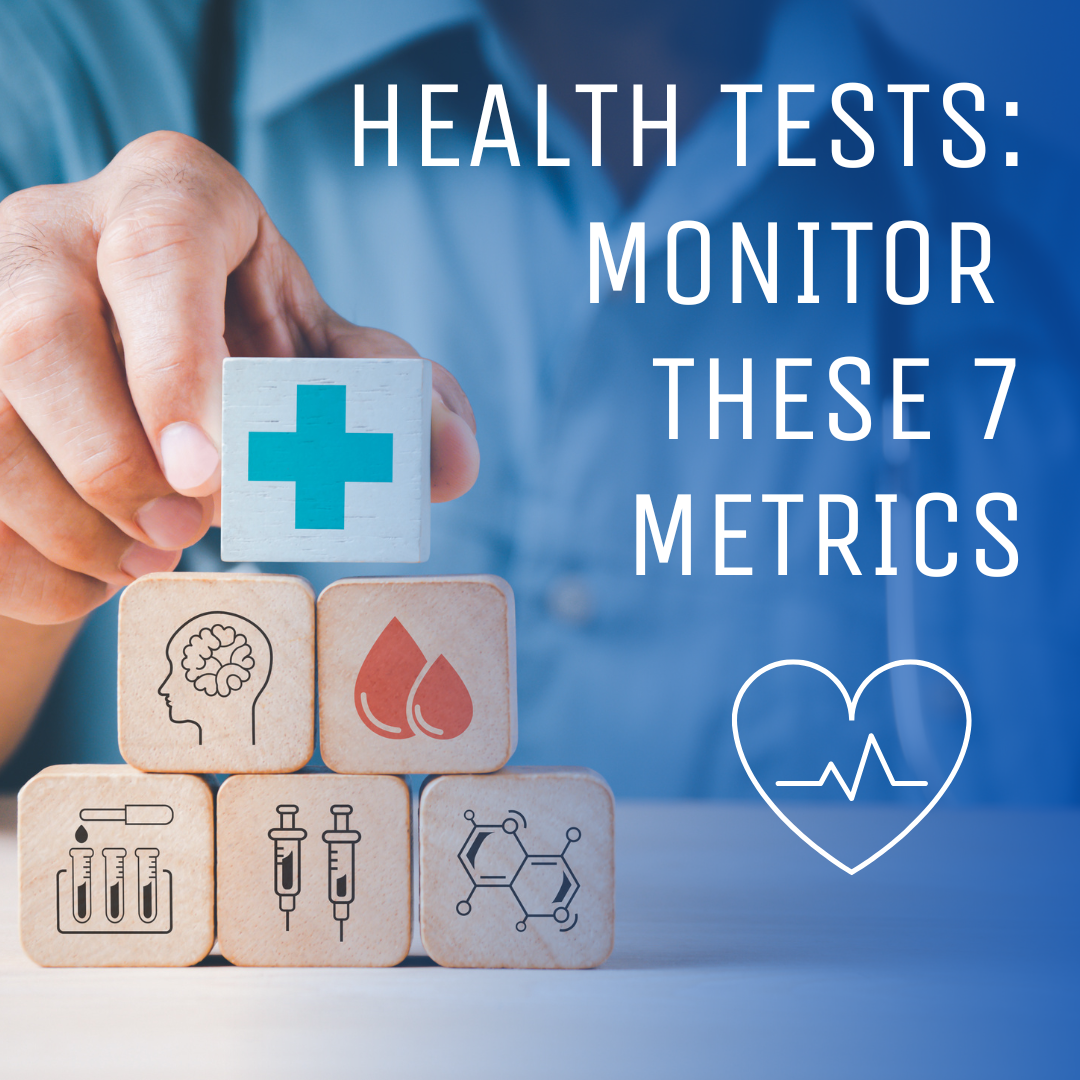Health Tests – What’s the Bare Minimum?

It’s important to work closely with your physician to regularly monitor critical health metrics. There are an unlimited number of tests that can be ordered and reviewed so it can easily become overwhelming to know what to focus on.
Here is a list of the bare minimum, key metrics you should monitor and discuss with your doctor:
 1 – Fasting Glucose
1 – Fasting Glucose
The Fasting Glucose test measures the amount of sugar (glucose) in your blood after an overnight fast. It’s an important test because it helps diagnose diabetes and prediabetes, which have both become a major health concern for Americans.
- Ideal Score: Typically, a fasting blood glucose level below 100 milligrams per deciliter (mg/dL) is considered normal. Prediabetes is diagnosed when fasting glucose levels range from 100 to 125 mg/dL, and diabetes is diagnosed when levels are 126 mg/dL or higher on two separate tests.
2 – Fasting Triglycerides
Triglycerides are a type of fat found in your blood and high levels can increase the risk of heart disease and stroke.
- Ideal Score: A normal fasting triglyceride level is below 150 milligrams per deciliter (mg/dL). Borderline high is 150-199 mg/dL, high is 200-499 mg/dL, and very high is 500 mg/dL or above.
3 – HDL (High-Density Lipoprotein)
HDL is often referred to as “good” cholesterol because it helps remove other forms of cholesterol from your bloodstream. Higher levels of HDL can lower your risk of heart disease.
- Ideal Score: Generally, higher levels of HDL are better. An HDL level of 60 milligrams per deciliter (mg/dL) and above is considered protective against heart disease, while levels below 40 mg/dL for men and below 50 mg/dL for women are considered low and increase the risk of heart disease.
4 – Hemoglobin A1c (HbA1c)
Hemoglobin A1c provides an average of your blood sugar control over the past 2 to 3 months. It’s important in managing diabetes.
- Ideal Score: For people without diabetes, the normal range for HbA1c is below 5.7 percent. An HbA1c level between 5.7 and 6.4 percent indicates prediabetes, and diabetes is diagnosed when the level is 6.5 percent or higher.
5 – Total Cholesterol to HDL Ratio
This ratio helps assess your risk of heart disease. A higher ratio indicates a higher risk.
- Ideal Score: A ratio of below 3.5 is considered optimal for reducing the risk of heart disease. Ratios above 5 may indicate a higher risk.
6 – Waist Circumference
This measurement is a simple method to assess abdominal obesity, which is linked to an increased risk of metabolic disorders and cardiovascular disease.
- Ideal Score: Ideal waist circumference varies based on factors like age and gender, but generally, for men, a waist circumference below 40 inches (102 cm) and for women, below 35 inches (88 cm) is considered healthy.
7 – Blood Pressure
Blood pressure measures the force of blood against the walls of your arteries. High blood pressure (hypertension) can increase the risk of heart disease, stroke, and other conditions.
- Ideal Score: Ideal blood pressure is typically considered to be below 120/80 mmHg. Prehypertension is defined as a systolic pressure ranging from 120 to 139 mm Hg or a diastolic pressure ranging from 80 to 89 mm Hg. Hypertension is diagnosed when blood pressure consistently measures 140/90 mm Hg or higher.
Yours in health & fitness,
Sherri McMillan
